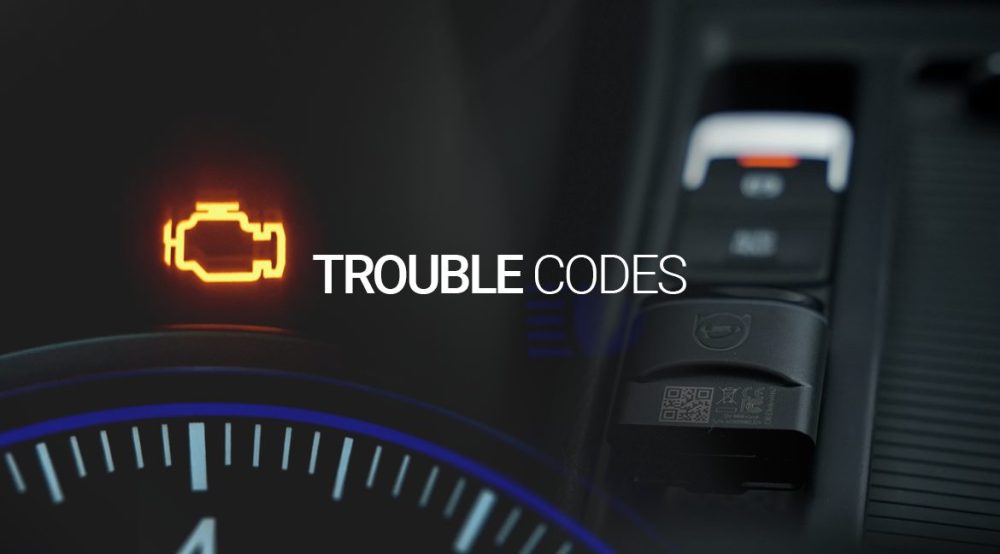
Diagnostic Trouble Codes (DTCs) are alphanumeric codes used to identify and diagnose problems in vehicles. These codes provide information about specific issues that are affecting a vehicle’s performance, allowing mechanics and technicians to quickly identify and resolve the problem. In this blog, we will explore what DTCs are, how they work, and how they can be used to keep your vehicle running smoothly.
What are Diagnostic Trouble Codes?
Diagnostic Trouble Codes are a set of codes generated by a vehicle’s onboard computer system. These codes provide specific information about issues that are affecting a vehicle’s performance, such as engine misfires, faulty oxygen sensors, and transmission problems. DTCs are typically generated when the computer system detects a problem that is outside of the normal operating range. This could be anything from a malfunctioning sensor to a more serious issue like a failed catalytic converter.
How do Diagnostic Trouble Codes work?
Diagnostic Trouble Codes are generated by a vehicle’s onboard computer system, which constantly monitors various sensors and systems in the vehicle to ensure that everything is working properly. When the computer system detects a problem, it stores a code in its memory that corresponds to the specific issue. The code is then transmitted to a diagnostic tool or scanner, which can be used to read the code and determine the nature of the problem.
DTCs are typically made up of five characters. The first character is a letter that indicates the system or subsystem that is affected, such as “P” for powertrain, “B” for body, or “C” for chassis. The second character is a number that indicates the specific problem, such as a misfire or an oxygen sensor malfunction. The remaining characters provide additional information about the problem, such as the location of the sensor that is malfunctioning or the severity of the issue.
How are Diagnostic Trouble Codes used?
Diagnostic Trouble Codes are used by mechanics and technicians to diagnose problems in vehicles. When a vehicle is brought in for service, the technician will use a diagnostic tool or scanner to read the DTCs stored in the vehicle’s computer system. The technician can then use this information to determine the nature of the problem and develop a plan to fix it.
DTCs can also be used by vehicle owners to diagnose problems and perform basic maintenance on their vehicles. There are a number of diagnostic tools and scanners available that can be used by DIY enthusiasts to read DTCs and perform basic repairs. By using DTCs to diagnose problems, vehicle owners can save time and money by identifying issues early and performing repairs before they become more serious.
Conclusion
Diagnostic Trouble Codes are an essential tool for diagnosing problems in vehicles. By providing specific information about issues affecting a vehicle’s performance, DTCs make it easier for mechanics and technicians to diagnose and repair problems. Additionally, by using DTCs to perform basic maintenance and repairs, vehicle owners can save time and money while keeping their vehicles running smoothly. Whether you are a professional mechanic or a DIY enthusiast, understanding how Diagnostic Trouble Codes work is an essential part of keeping your vehicle in good condition.
Advantages of Diagnostic Trouble Codes (DTCs):
- Quick Identification of Problems: DTCs provide specific information about issues that are affecting a vehicle’s performance. This makes it easier for mechanics and technicians to quickly identify and diagnose problems.
- Saves Time and Money: By identifying issues early and performing repairs before they become more serious, DTCs can save vehicle owners time and money in the long run.
- Standardization: DTCs provide a standardized way to diagnose problems across different makes and models of vehicles. This makes it easier for technicians to work on a wide range of vehicles.
- Accessibility: With the availability of diagnostic tools and scanners, DTCs are now more accessible to vehicle owners, enabling them to perform basic maintenance and repairs themselves.
Disadvantages of Diagnostic Trouble Codes (DTCs):
- False Positives and Negatives: Sometimes, DTCs can provide inaccurate information, leading to false positives or false negatives. This can cause unnecessary repairs or the failure to identify a problem.
- Complex Issues: DTCs may not always provide enough information to diagnose complex issues. This may require further testing or diagnostic procedures.
- Dependency on Technology: DTCs rely on computer systems, which can be vulnerable to malfunctions or errors. This may lead to inaccurate readings or the inability to generate DTCs.
- Overreliance on DTCs: Some technicians may over-rely on DTCs and not perform the necessary tests or inspections to fully diagnose a problem. This can result in incorrect repairs or missed issues.
In conclusion, while DTCs have numerous advantages, including quick identification of problems and standardized diagnosis procedures, they also have some disadvantages, such as false positives and negatives and over-reliance on technology. It is important to understand both the advantages and disadvantages of DTCs to effectively diagnose and repair vehicle problems.





